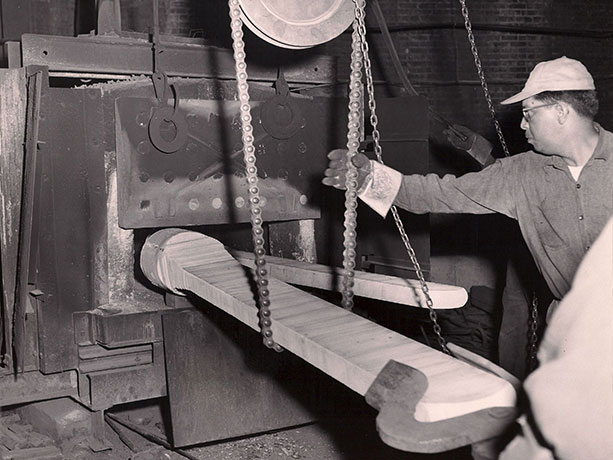Before forging, Anderson Shumaker saw cuts the initial billet and trims the ends of the product prior to shipping. Cutting diameters up to 42 inches, we have the capabilities to part rings as thin as ½” thick from one sleeve, which saves you money on thin rings. Parts can also be “nested” and cut from larger stock on our 5 band saws, and they can be stacked and cut on larger equipment, which saves both time and additional steps in manufacturing.
Saw Cutting
Machining
Anderson Shumaker has the in-house capability to machine your part to near net shape. Our manual lathes and milling machines can make your forging to CNC ready, improving your lead-time. Learn More

Non-Destructive Testing
Ultrasonic testing bounces a sound wave through the forging looking for a back reflection, which could indicate a defect in the material. In liquid penetrant testing a dye is sprayed over the forging, penetrating any cracks or defects on the surface. Afterwards, the part is examined under a special light to illuminate imperfections. Learn More
Destructive Testing
Testing such as charpy impact, tensile, stress rupture, grain size, macro and micro, can be preformed by forging an extra test coupon, using an extra forging or putting a prolongation on the forging and removing it for testing. The test piece is then broken and measurements are taken and recorded to insure the material is capable of the requirements of the desired specification. Learn More

Heat Treatment
Proper thermal processing is essential when manufacturing quality parts. Annealing after forging removes the stresses produced during the process. With state-of-the-art controls, temperatures are maintained to assure proper metallurgical requirements are met. Polymer quenching, normalizing, tempering, annealing, and age hardening can all be done in-house to assure both traceability and improved lead-time. Learn More
